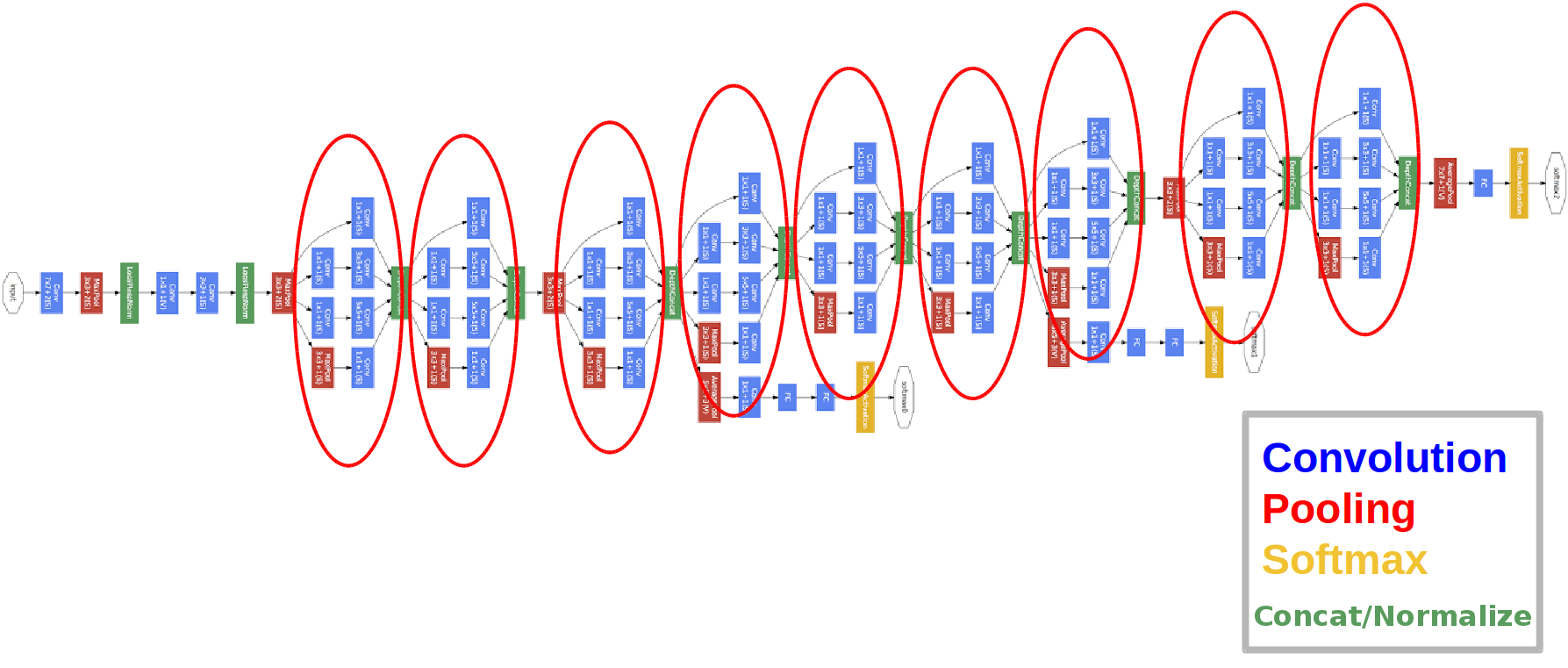GoogLeNet
While VGGNet came second in the 2014 Imagenet Classification challenge, the next model we will talk about, GoogLeNet, was the winner that year. Created by Google, it introduced an important way to make networks deeper and reduce the number of parameters at the same time. They called what they came up with the Inception module. This module populates the majority of the GoogLeNet model.
GoogLeNet has 22 layers and almost 12 times fewer parameters than AlexNet. Thus, in addition to being far more accurate, it is also much quicker than AlexNet. The motivation for the Inception module creation was to make a deeper CNN so that highly accurate results could be achieved and for the model to be usable in a smartphone. For this, the calculation budget needed to be roughly 1.5 billion multiply-adds in the prediction phase:

Inception module
The Inception module (or block of layers) aims to cover a large area but also keep a fine resolution in order to see the important local information in images...







































































